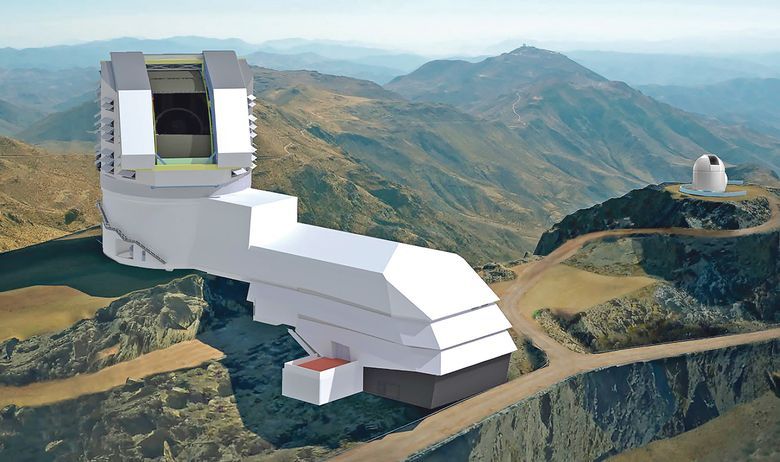Two major space projects have a Croatian connection.
Croatian scientists are part of a team that has built and set up the first prototype of a large telescope called LST-1, a telescope that will detect the most energy-intensive part of the spectrum of cosmic electromagnetic radiation (with energy ranges from 20 GeV to 300 TeV, which is 20 times more energy than the levels achieved by the most powerful accelerator in the world, the LHC at CERN), reports Jutarnji List on October 15, 2018.
In other words, by measuring the cosmic gamma-ray radiation, this telescope will take images of the most violent processes in the universe which occur in areas of such dense energy and substance that they are impossible to be replicated in laboratories, for example, near mysterious black holes and neutron stars.
The LST telescope was inaugurated on the island of La Palma, which is part of the Canary Islands, and the ceremony was attended by 200 guests from all over the world. The team responsible for setting up a telescope consisted of more than 200 scientists from ten countries: Brazil, Croatia, France, Germany, India, Italy, Japan, Poland, Spain and Sweden.
Croatia contributed to the telescope by constructing an auxiliary instrument, which was designed, developed and tested at the Faculty of Electrical Engineering, Mechanical Engineering and Naval Architecture (FESB) in Split. The device developed by Nikola Godinović and Darko Zarić will precisely monitor the direction of the LST-1 telescope. Scientists from Rijeka – Dijana Dominis Prester, Tomislav Terzić and Saša Mićanović – are investigating how the newly-built LST-1 telescope could be incorporated in joint observations with the existing MAGIC telescopes.
“Although the LST-1 telescope is 45 metres tall and weighs 100 tons, it is extremely fast –it can be directed at any point in the sky within 20 seconds, so that it can capture brief short-term low-energy bursts which we still do not know where and how are created. The LST telescopes will allow the study of the gamma-ray sources at cosmological distances,” explained the scientists behind the project.
In addition to the large LST-1 telescope, a whole network of telescopes is planned to be installed at the Canary Islands. In the next few years, the construction of 15 medium-sized telescopes is planned, while small telescopes are needed to fully cover the planned radiation spectrum.

Similarly, Croatian astrophysicist Željko Ivezić, a professor at the University of Washington in Seattle, has recently been appointed as deputy chief of the Large Synoptic Survey Telescope project (LSST), which is one of the largest telescopes in the world and will be located in Chile.
“LSST will not have the world’s largest mirror, but as the observation system it will include a telescope with the largest combination of a large mirror and a large field of vision, the largest ever constructed camera, with 3200 megapixels, and sophisticated processing software for about 100,000 terabytes of data gathered during ten years of activity. The main idea of the project is to record the whole sky every three nights over a period of ten years. Without the combination of a large mirror and a large field of vision, other telescopes would need thousands of years to take so many pictures of the same quality. By capturing an LSST image in a computer, we will have a map of the sky with about 20 billion stars and about as many galaxies,” said Ivezić about the project that will cost more than a billion dollars and start in 2022.
In addition to Ivezić, the project includes several Croatian scientists. “Former students of Croatian universities working on the project are Mario Jurić, who is also a professor of astronomy at the University of Washington, and doctoral student Dino Bektešević. At the beginning of the project, Veljko Radek of the Brookhaven Laboratory worked on the camera development, but he has since retired. Also, we used to closely collaborate on software development with a group led by Dejan Vinković in Split,” said Ivezić.
“When the LSST starts with observations, we hope that scientists from Croatia, from the Ruđer Bošković Institute, the Physics Departments in Rijeka and Zagreb, and the Hvar Observatory, will be involved in the scientific data analysis. The planning of that LSST phase already involves more than a thousand scientists from the United States, Europe and Asia. For relatively small countries, participation in such international collaborations is one of the most effective ways to maintain a high quality of scientific research and attract students to science disciplines,” concluded Ivezić.








